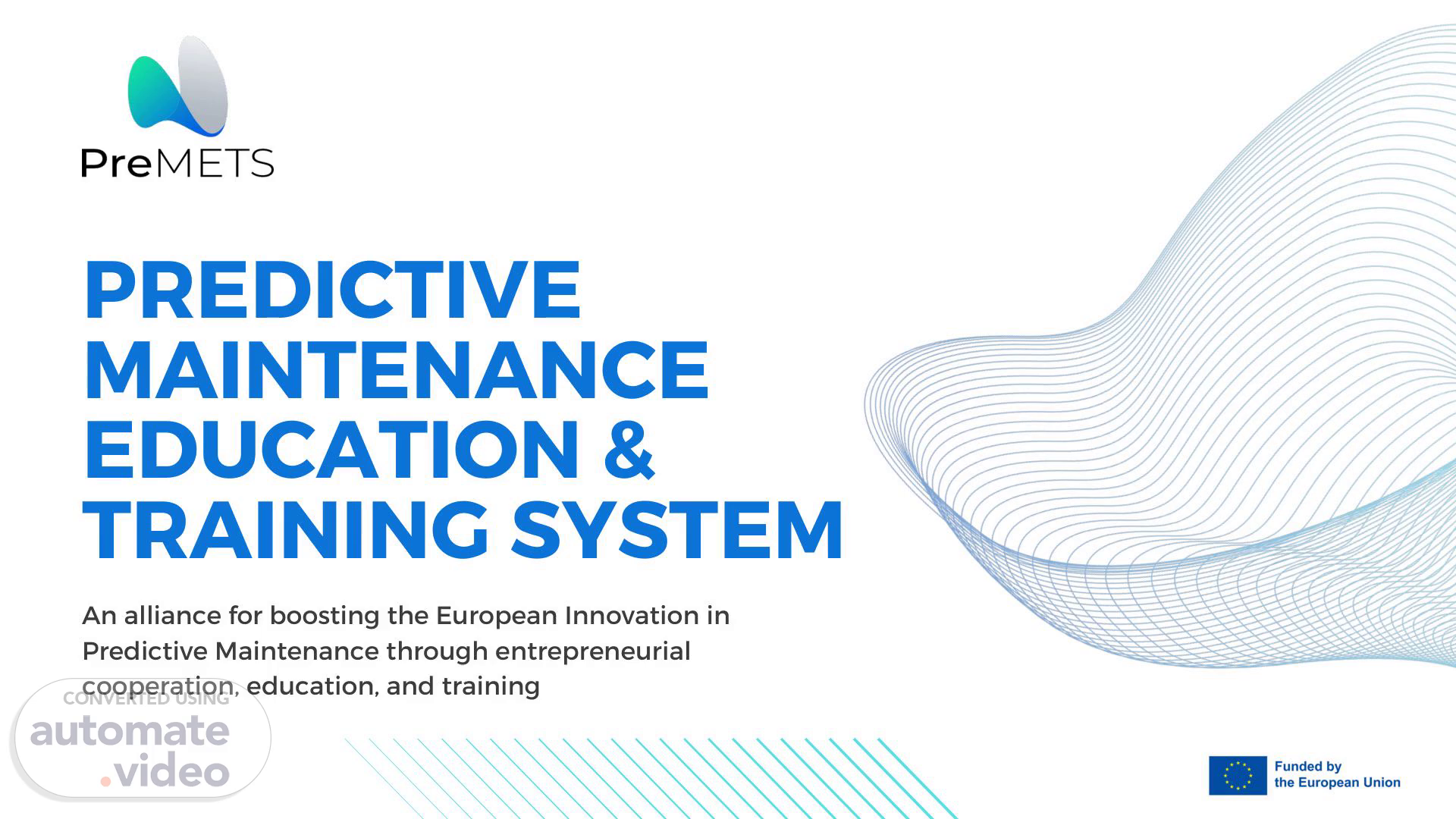
PreMETS presentation template
Scene 1 (0s)
PREDICTIVE MAINTENANCE EDUCATION & TRAINING SYSTEM An alliance for boosting the European Innovation in Predictive Maintenance through entrepreneurial cooperation, education, and training.
Scene 2 (9s)
Ethical learner analytics guidelines for preventive maintenance field Version 1.0 Prepared by ISIM Timisoara.
Scene 3 (17s)
Content 1. Data Collection 2. Learning Systems 3. Ethical Considerations 4. Bias and Fairness 5. Transparency and Accountability 6. Regulatory Compliance 7. Continuous Improvement 8. Analytic Indicators.
Scene 4 (28s)
Ethical learner analytics refers to the responsible and conscientious use of data analytics and insights derived from educational or learning systems while adhering to ethical principles and standards. It involves the collection, analysis, and utilization of data within educational settings, focusing on ethical considerations related to data privacy, fairness, transparency, and accountability. Learner analytics involves gathering data from various sources such as: • interactions with learning platforms, • assessment results, • feedback, and other behavioural data. Ethical considerations are paramount in handling this data to ensure it is used responsibly and with respect for individual privacy and rights. Introduction.
Scene 5 (55s)
Ethical learner analytics can contribute significantly by: • optimizing maintenance schedules, • reducing downtime, and • predicting potential failures before they occur. By balancing technological advancements with ethical considerations, organizations can maximize the benefits of: • data-driven maintenance strategies while maintaining trust and integrity in their operations. Benefits.
Scene 6 (1m 10s)
Data collection Ethical learner analytics in preventive maintenance initiates by sourcing pertinent data from multiple channels, including equipment sensors, historical maintenance records, and user inputs. It aims to comprehensively understand: • equipment behaviour, • detect failure patterns, and • discern the specific needs for maintenance and upkeep..
Scene 7 (1m 25s)
Learning systems The implementation of learning systems involves the deployment of advanced technologies such as machine learning, AI, and analytics. These systems are designed to meticulously process the collected data. Through their capabilities, they predict potential equipment failures, offer recommendations for maintenance schedules, and optimize maintenance procedures based on both historical data and real- time information..
Scene 8 (1m 43s)
Ethical considerations Within ethical learner analytics, a paramount focus lies on: • preserving the privacy, • security, and • consent of individuals whose data is utilized. This comprises: • anonymization of personal data, • obtaining explicit consent for data usage, and • maintaining stringent measures to safeguard sensitive information against unauthorized access or usage..
Scene 9 (1m 59s)
Bias and fairness Rigorous checks should be put in place to identify and mitigate biases within algorithms and analytical processes that might influence decision-making. Ensuring impartial treatment across diverse: • equipment types, • geographical locations, or • user groups is essential. Emphasis is placed on avoiding discriminatory practices that could negatively influence the integrity of the analytics outcomes..
Scene 10 (2m 17s)
Transparency and accoutability A key pillar of ethical learner analytics is the provision of transparent explanations concerning the collection, utilization, and decision-making processes derived from the data. This transparency builds trust among stakeholders and ensures accountability for the decisions made based on insights gleaned from analytics..